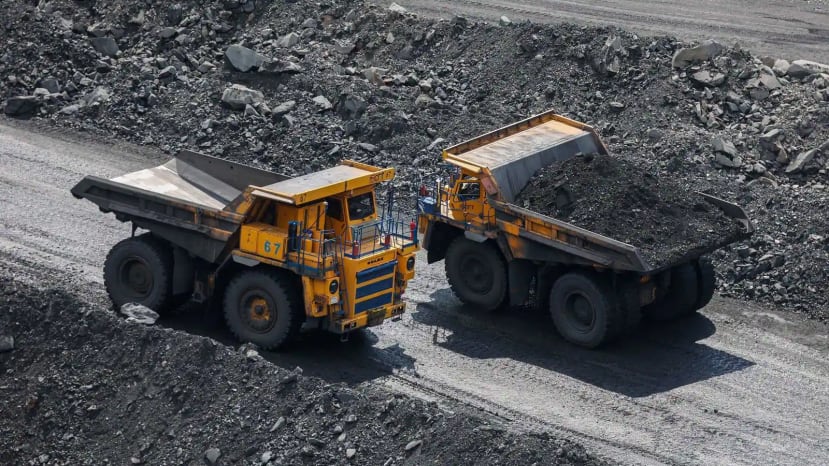COP26 Summary: The Glasgow Agreement | Clean Energy | DesignSpark
Follow articleHow do you feel about this article? Help us to provide better content for you.
Thank you! Your feedback has been received.
There was a problem submitting your feedback, please try again later.
What do you think of this article?
The Glasgow climate pact has finally been agreed after two long weeks of hard negotiations and some speculation that it might not happened at all. However, there was an urgency and optimism among the parties that we did not see in Paris, fuelled by a growing frustration and anxiety amongst the global population. Climate action has become a social movement, and policy makers were acutely aware of the vast protests going on outside the conference hall and the pressure they brought to proceedings.
However, the climate crisis itself is a holistic issue, and each delegation has their own priorities in any solutions. It was therefore encouraging to see policy makers, armed with the lasted IPCC report, find common ground on critical issues such as energy, deforestation, and climate finance. In the wake of COP26, it is important to discuss what these new agreements mean for the net zero ambition, what resources and technologies will enable tangible action and how sectors like engineering will be critical to any success.
Clean Energy
The Glasgow climate agreement commits to the aim of halving global carbon emissions by 2030, with the energy sector currently responsible for around a quarter of these emissions. It was therefore significant to see an emphasis on building clean energy infrastructure as the most efficient method of reducing global emissions, while laying the groundwork for decarbonising other sectors like transport.
Coal is considered the most polluting fuel
Coal is used abundantly in developing countries as a cheap source of heat and power but is widely regarded as the most polluting fossil fuel. The condition to reduce the use of unabated coal in the Glasgow agreement was met with some resistance given the dependency on fossil fuels for growth and raising the standard of living in some developing countries. Access to renewables and finance for building clean infrastructure is therefore critical in the move away from the most polluting fuels.
Building a broader capacity for renewables that extends beyond the typical focus on solar and wind power will streamline the global transition to clean energy and make it easier to accommodate for intermittent weather conditions and regional geography. Fortunately, there are many options for renewable energy generation including hydroelectric, geothermal, wave and tidal which can make supply more reliable while the accessibility of microgeneration can benefit more remote settlements.
Pumped hydro plants can operate as both a generator and storage medium
Renewables are also conducive to a decentralised power generation model which limits the need for full-scale national distribution networks alongside existing storage technologies like battery, thermal and pumped-hydro. Renewable energy is therefore flexible enough that there should be no excuse to keep consuming fossil fuels unabated. The Glasgow agreement recognises the need to phase out the use of “inefficient fossil fuel subsidies” where policy makers should now use tax payer money to fund clean energy projects instead if we are to meet our global climate ambitions.
Restoring Nature
It was refreshing to see a specific focus on deforestation and biodiversity loss during COP26 in a shift away from an over-reliance on artificial carbon capture technologies, in favour of proactively restoring forests and other natural carbon stores. The emphasis on other greenhouse gasses including methane in the final agreement also shows a more sincere commitment to the way we use the land as a resource.
Reforestation has the potential to greatly reduce the severity of the climate crisis where agriculture and changes to land use currently contribute a quarter of global greenhouse gas emissions. Although there was no specific mention of sustainable land use or agricultural practices in the agreement, innovation in these sectors will be critical in achieving the ambition of the Glasgow climate agreement.
Palm oil monoculture farming destroys biodiversity
Native forests are often cut down for agricultural purposes like cattle grazing or monoculture crop plantations like palm oil. The big challenge for delegates therefore will be reversing the process of deforestation while optimising the production of these goods. However, the framework to promote these practices are currently underdeveloped despite the range of potential solutions to explore.
Existing technologies like hydroponics and emerging variants like vertical farming have the potential to increase crop yield while freeing up land resources for regenerative purposes. Whereas, livestock can contribute to sustainable forestry and wildfire prevention by consuming excessive undergrowth. Needless to say, there are alternatives to the current flavour of unsustainable industrial agriculture and delegates should focus more on promoting permaculture that balances the existence of people and the planet. There are a lot of examples of sustainable agriculture, like natural farming and micro-farming that focus more on small scale, low impact and high yield production with some encouraging results that, as an added bonus, do not rely on polluting chemicals like fertiliser and pesticides.
Adaption, Loss and Damage
Sea levels and extreme weather conditions are on the rise around the world and delegates from vulnerable countries have used COP26 as a platform to highlight the need for further adaption and finance in the event of loss and damage. Under the Paris agreement, developed nations have pledged 100 billion dollars annually to help with adaption but have so far fallen short of this ambition. Low-lying countries like Barbados have emphasised the existential threat of these global changes in an attempt to mobilise the money needed to adapt but it is worth noting that the majority of climate finance comes in the form of loans, not grants, which is loading developing counties with more debt.
The Glasgow agreement acknowledges the need for more technology transfer between countries which could be a more effective resource where finance falls short. Allowing countries more freedom in their approach to engineering solutions will allow them to innovate at a local level based on the type of threat.
Desalinisation converts seawater to safe drinking water
Basic meteorology dictates that rising average air temperatures will lead to an increase in humidity and subsequent precipitation but each country will experience these effects in different ways. Higher temperatures can often lead to draught where more water is held in the atmosphere and fails to condense into groundwater that would otherwise feed people and plants. To negate the risk of famine, artificial irrigation and aquafers may be needed in the form of off-grid rainwater collection, storage infrastructure and even desalinisation plants that convert seawater to safe drinking water.
On the other hand, higher average air temperatures and overall humidity can lead to more intense precipitation and storm conditions in other regions causing flooding, that can often be compounded by rising sea levels or meltwater runoff. An understanding of effective flood defences, drainage and active irrigation infrastructure is therefore vital in adapting to the effects of climate change as well as the mitigation of any potential damage or loss of life.
COP27
Armed with an unequivocal consensus from the scientific community, the COP26 Glasgow agreement sets out a clear roadmap to reduce global emissions by taking aim at the biggest sources of greenhouse gasses as a matter of urgency. The emphasis on clean energy is especially important as it will underpin the majority of climate targets going forward alongside the commitment to restore nature. However, sustainability is a continuous process and while a strong foundation for change has been established, there is still a lot that needs to change in the pursuit of net-zero by 2050. The time between now and COP27 in Egypt next year will determine how parties will mobilise resources like finance, technology and engineering to literally save the world.





